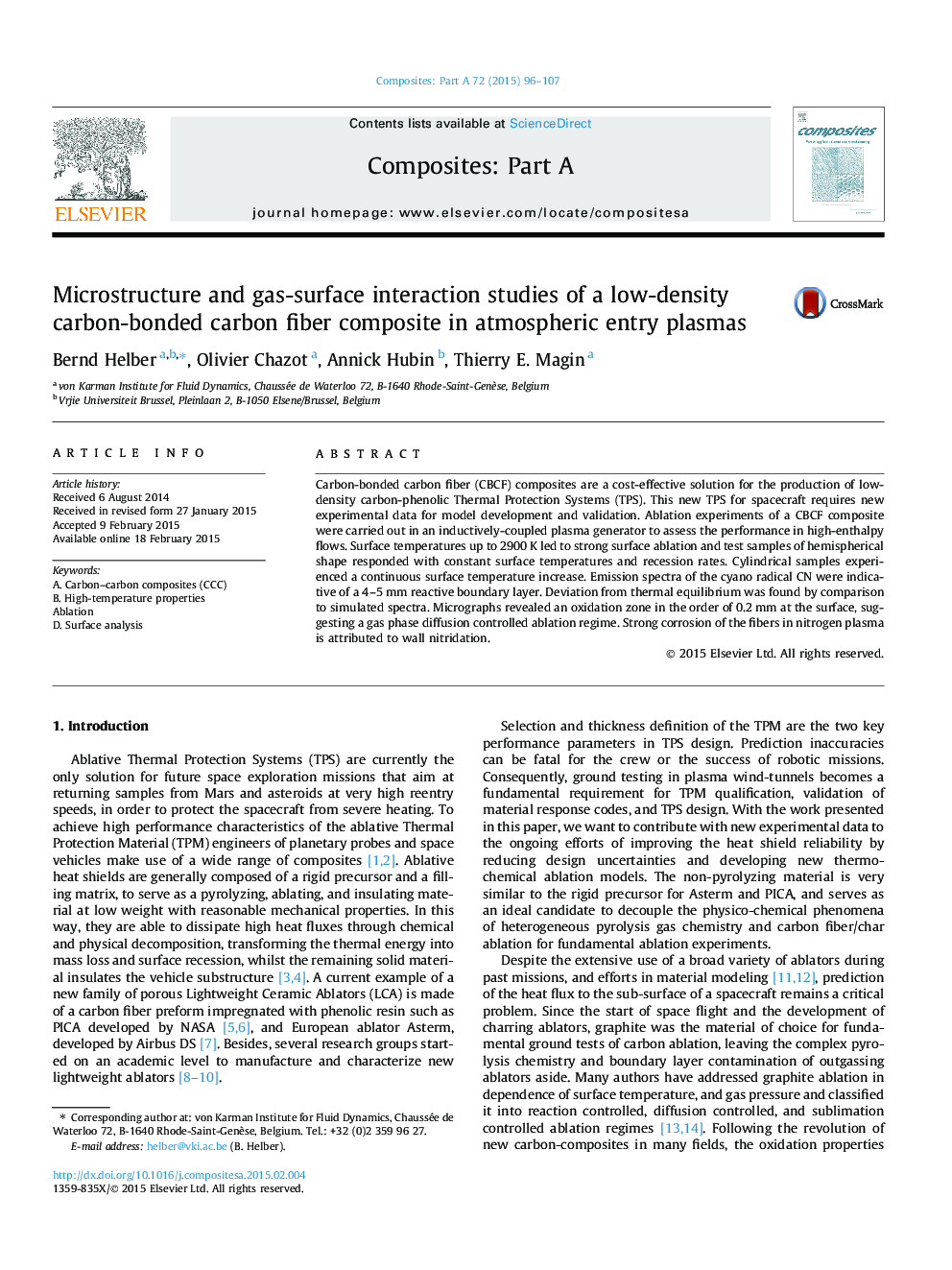| Article ID | Journal | Published Year | Pages | File Type |
|---|---|---|---|---|
| 7891910 | Composites Part A: Applied Science and Manufacturing | 2015 | 12 Pages |
Abstract
Carbon-bonded carbon fiber (CBCF) composites are a cost-effective solution for the production of low-density carbon-phenolic Thermal Protection Systems (TPS). This new TPS for spacecraft requires new experimental data for model development and validation. Ablation experiments of a CBCF composite were carried out in an inductively-coupled plasma generator to assess the performance in high-enthalpy flows. Surface temperatures up to 2900Â K led to strong surface ablation and test samples of hemispherical shape responded with constant surface temperatures and recession rates. Cylindrical samples experienced a continuous surface temperature increase. Emission spectra of the cyano radical CN were indicative of a 4-5Â mm reactive boundary layer. Deviation from thermal equilibrium was found by comparison to simulated spectra. Micrographs revealed an oxidation zone in the order of 0.2Â mm at the surface, suggesting a gas phase diffusion controlled ablation regime. Strong corrosion of the fibers in nitrogen plasma is attributed to wall nitridation.
Related Topics
Physical Sciences and Engineering
Materials Science
Ceramics and Composites
Authors
Bernd Helber, Olivier Chazot, Annick Hubin, Thierry E. Magin,
